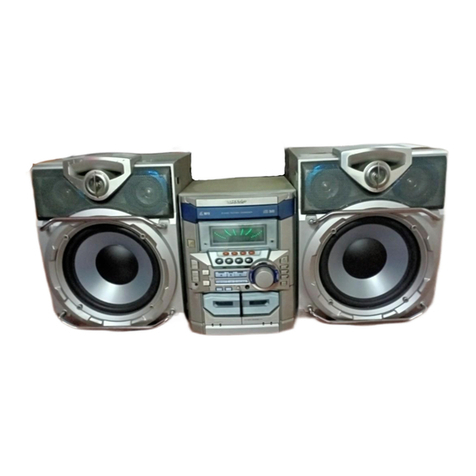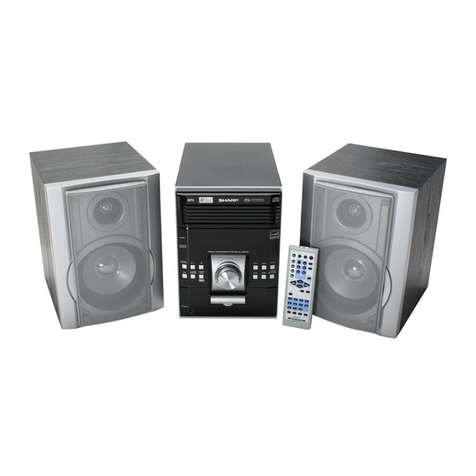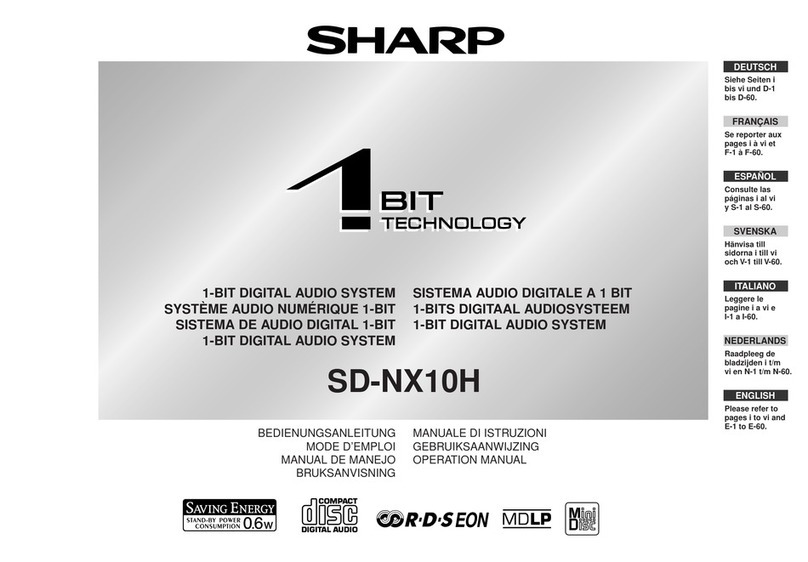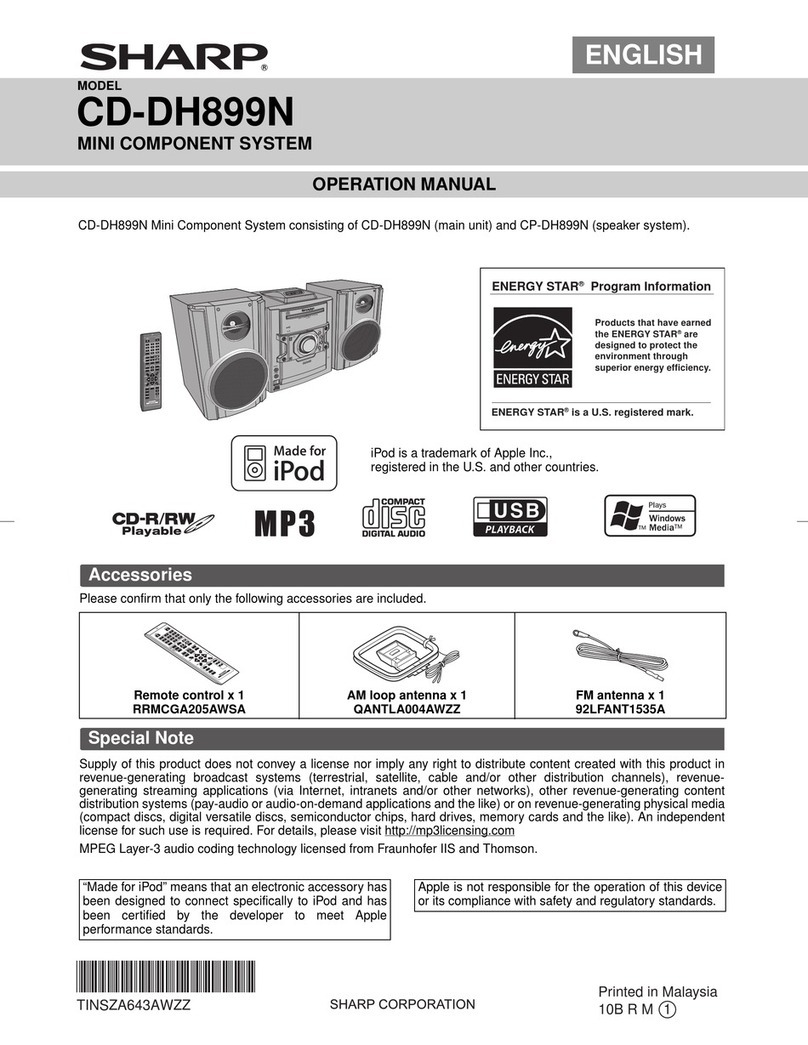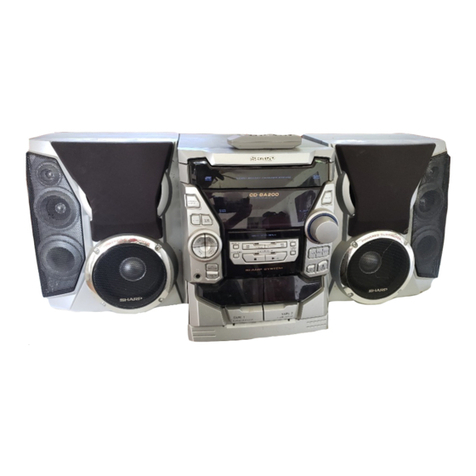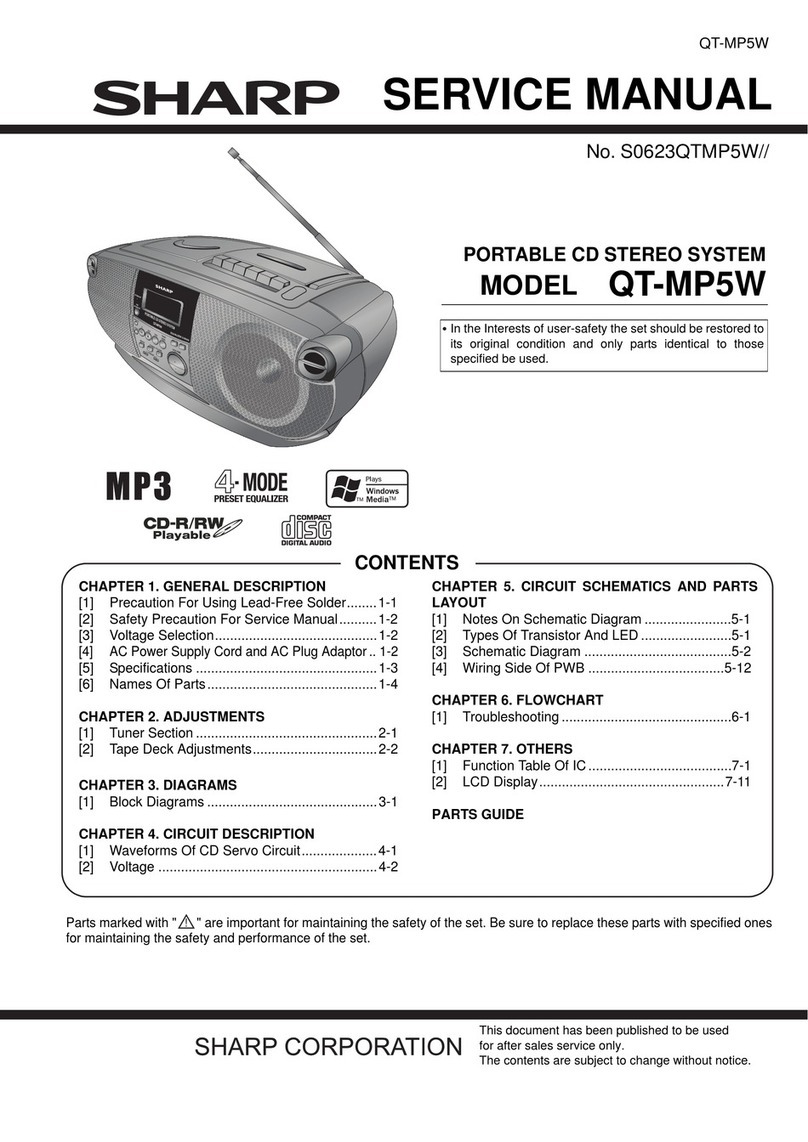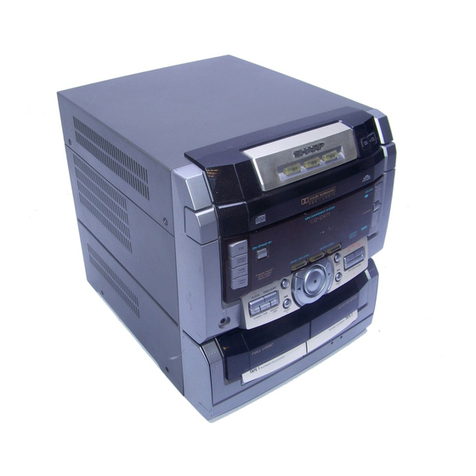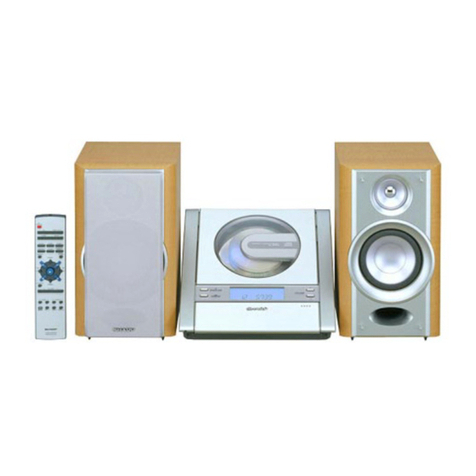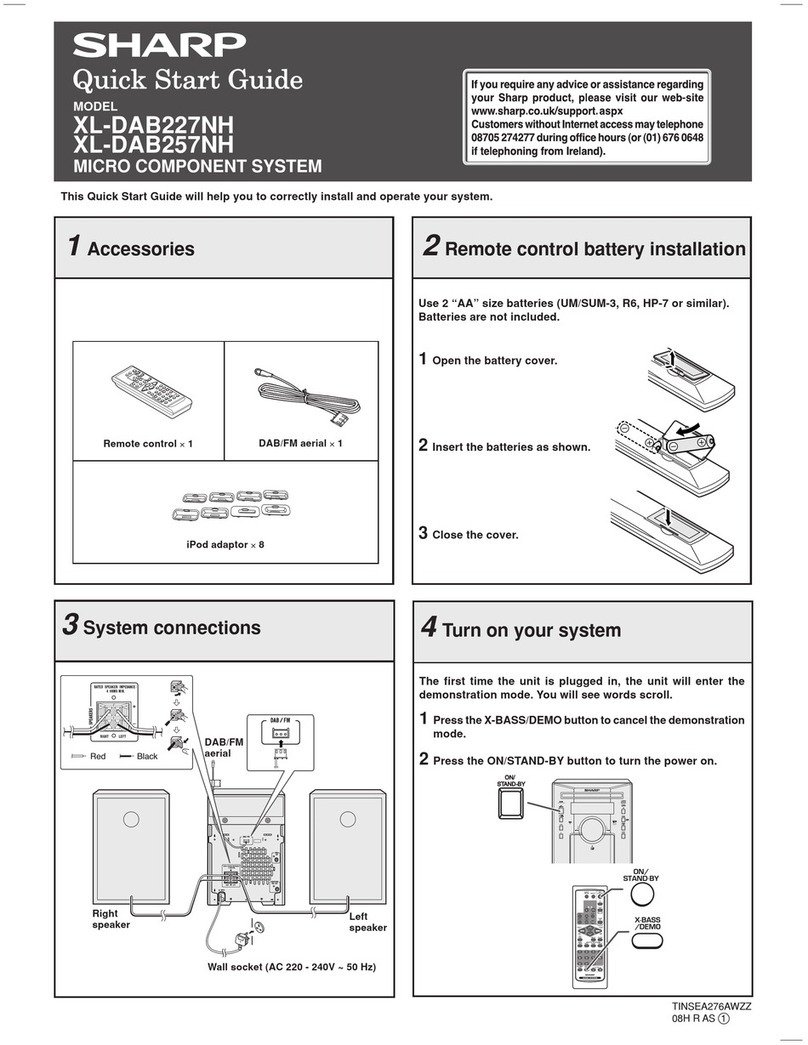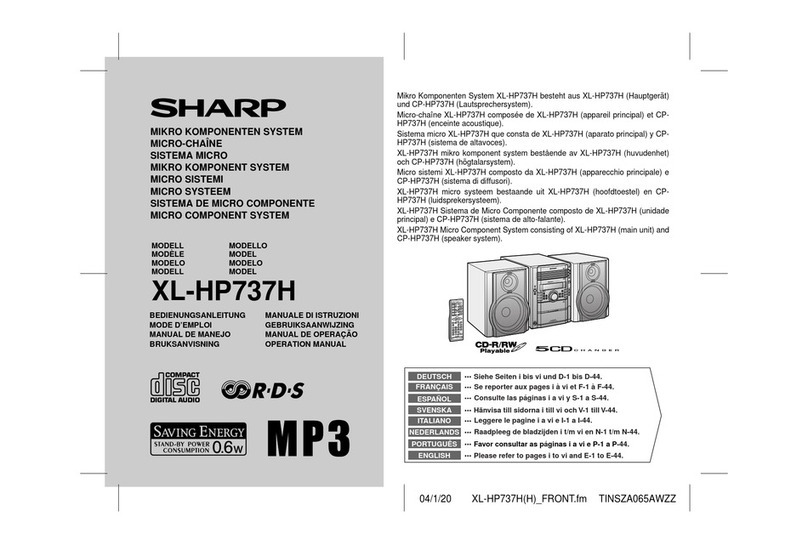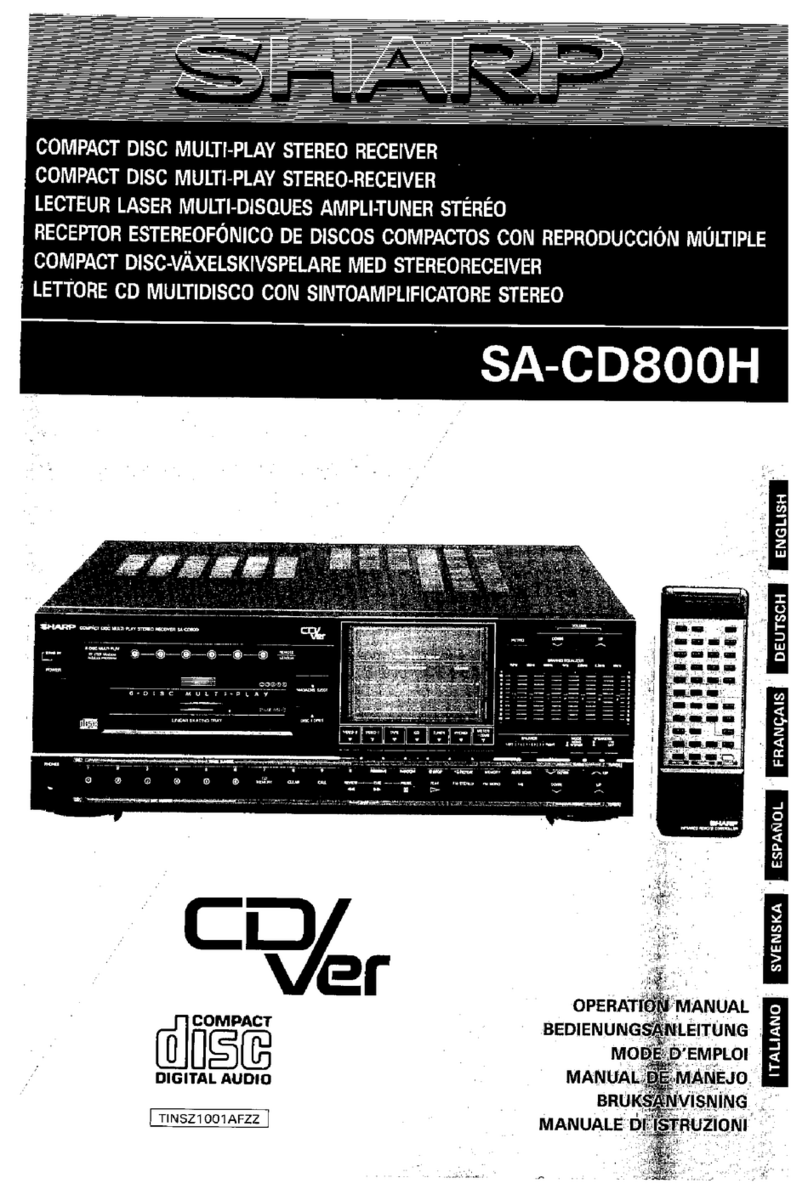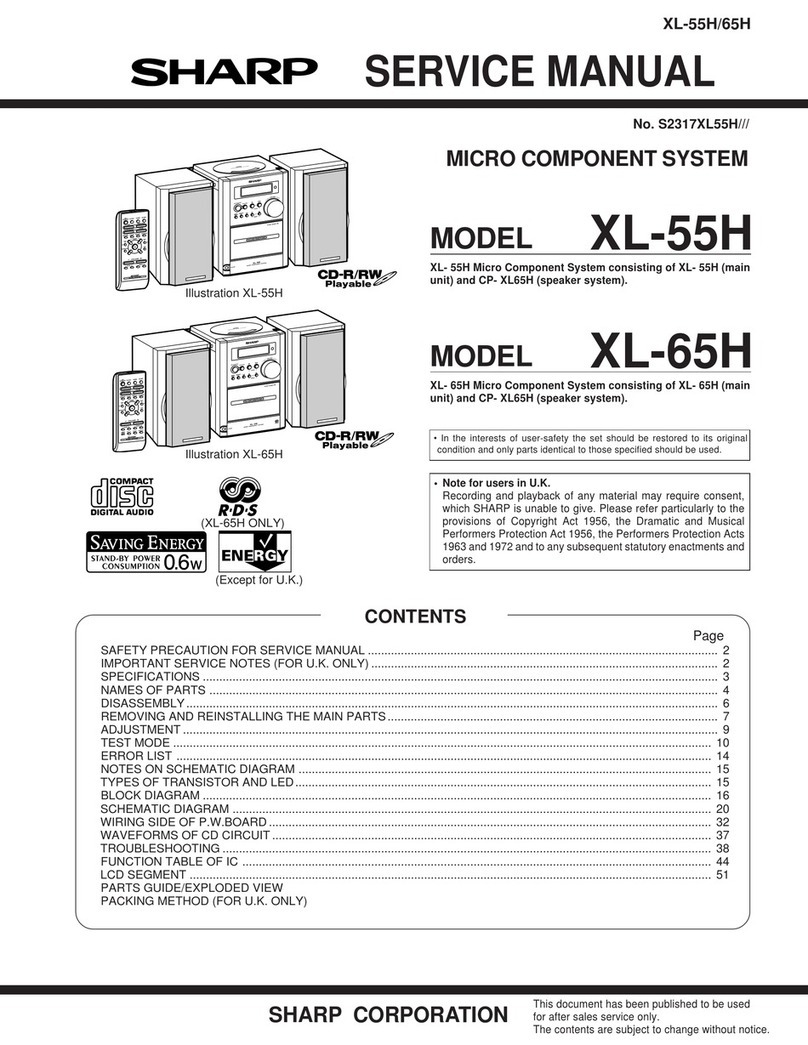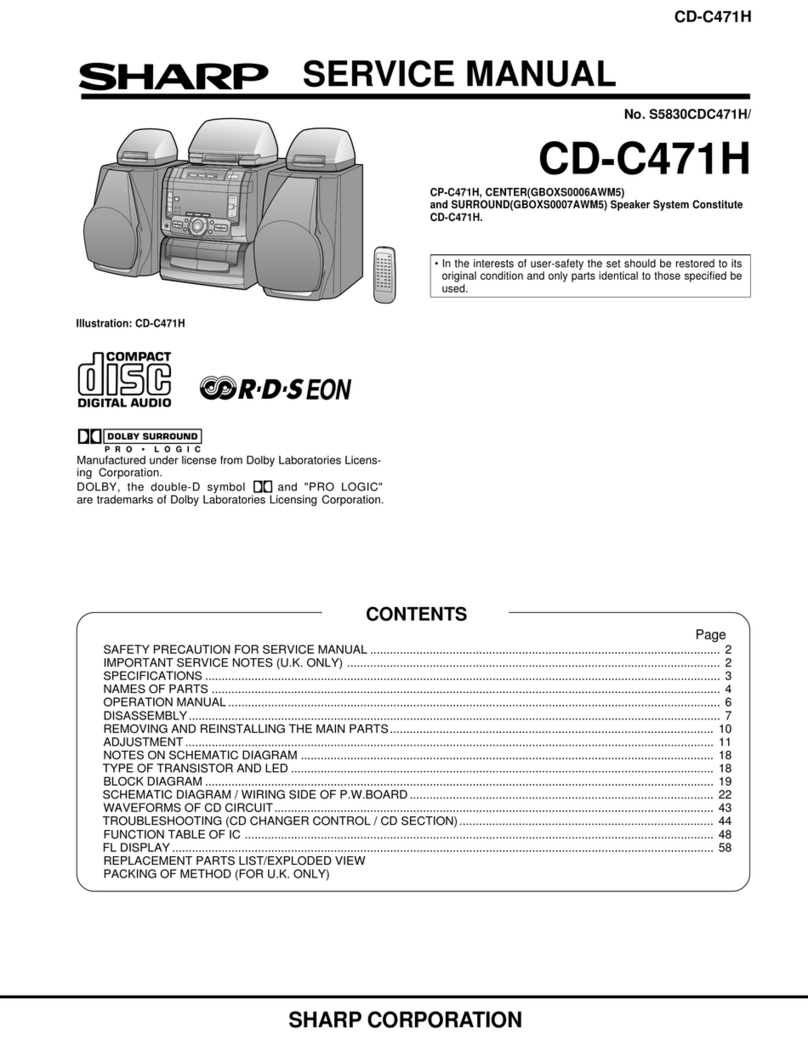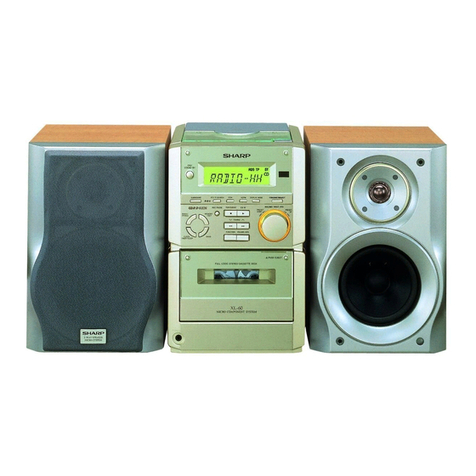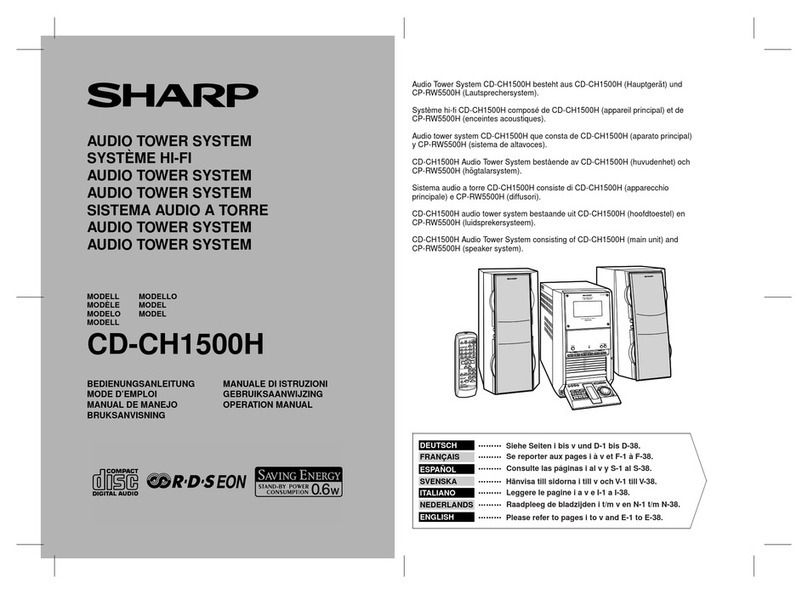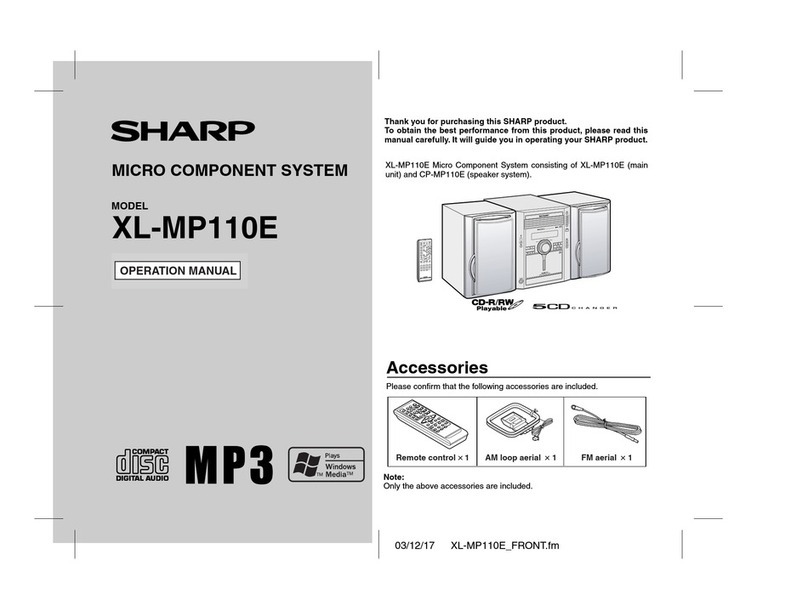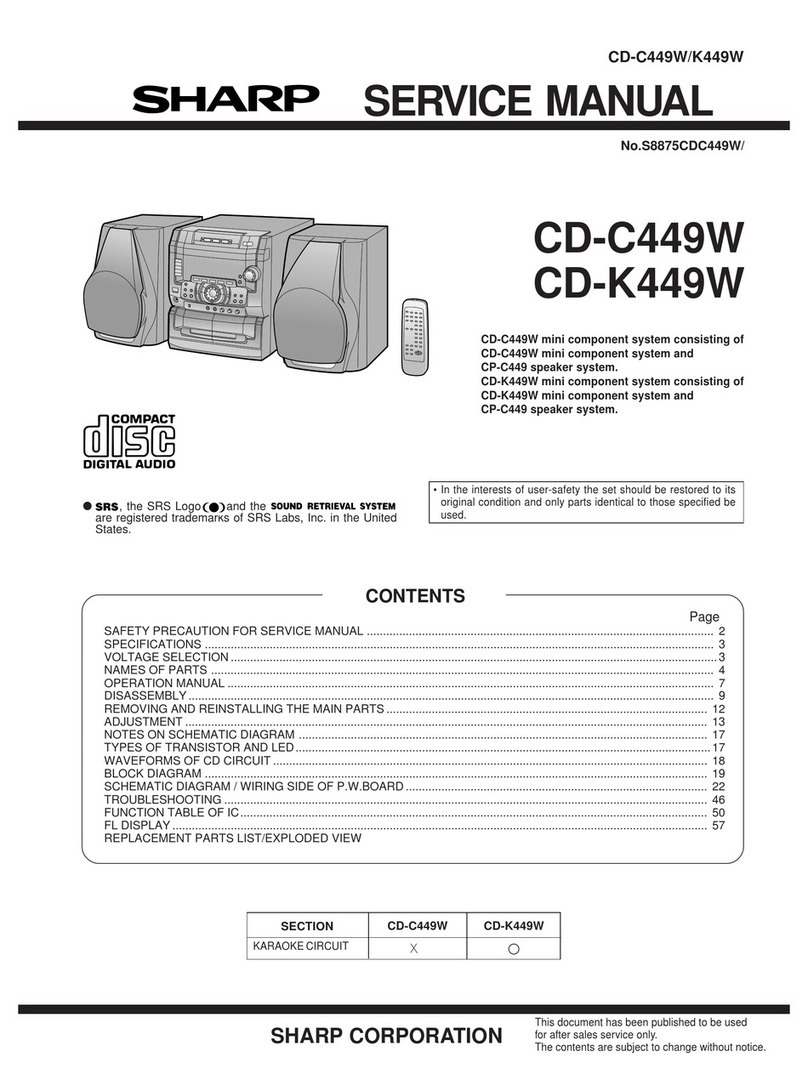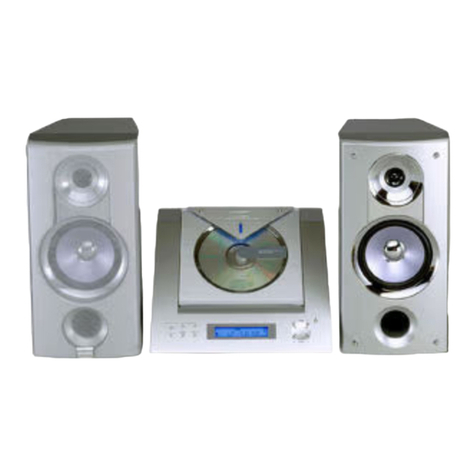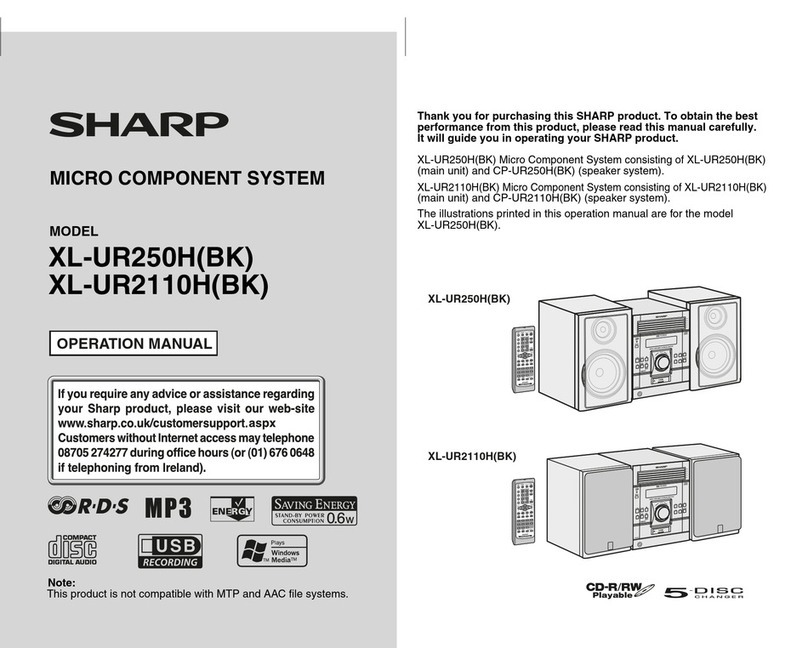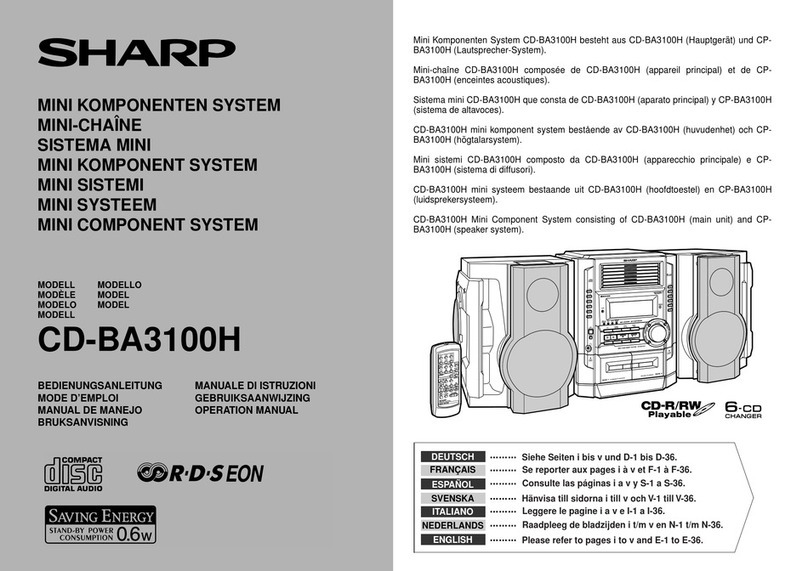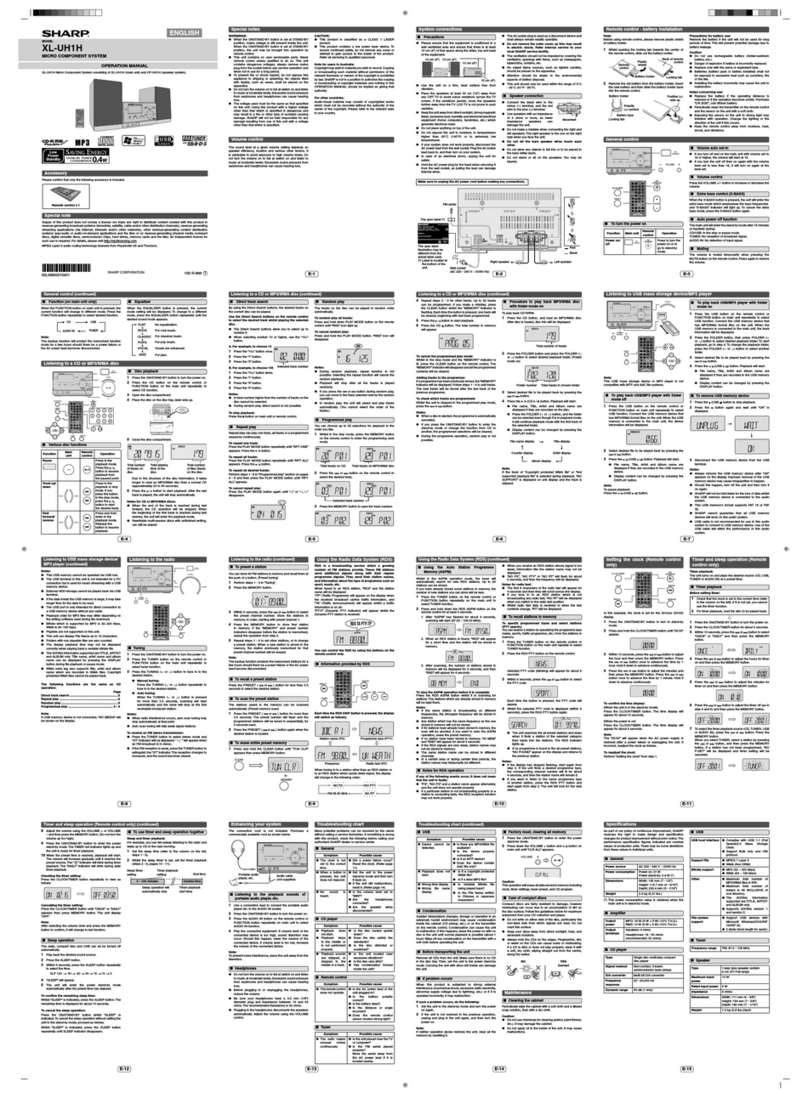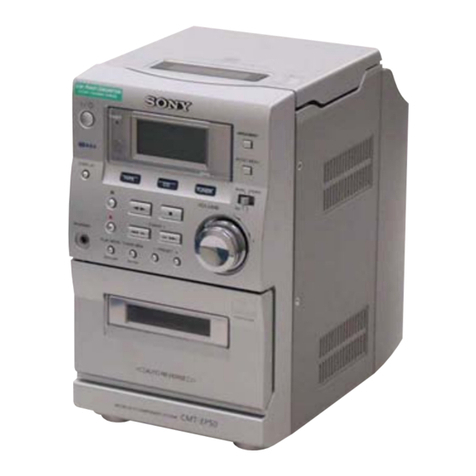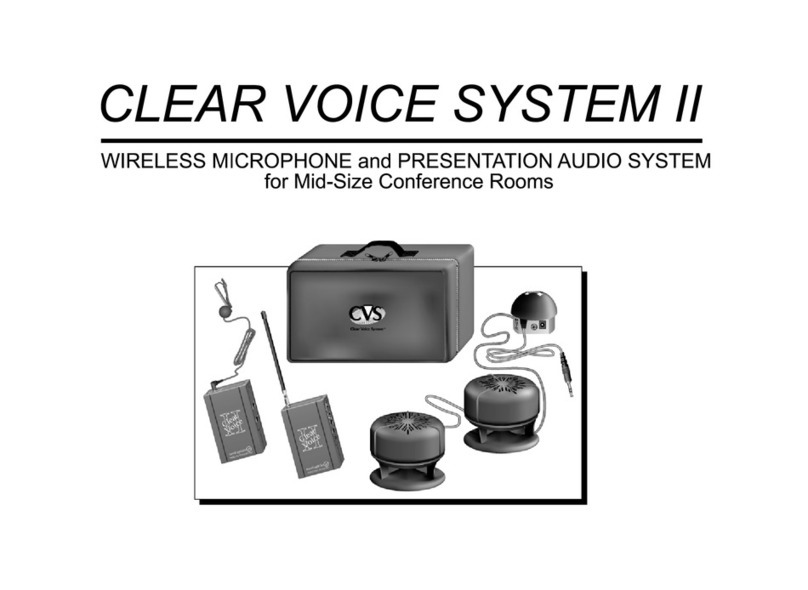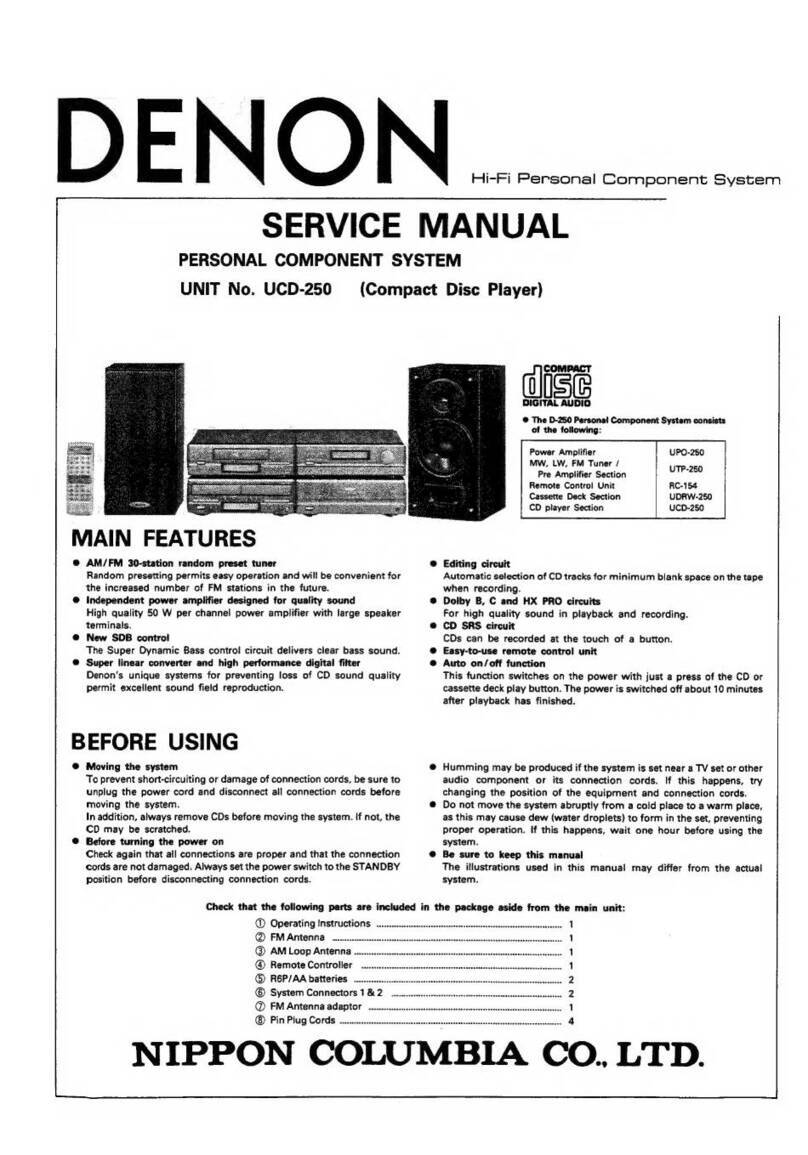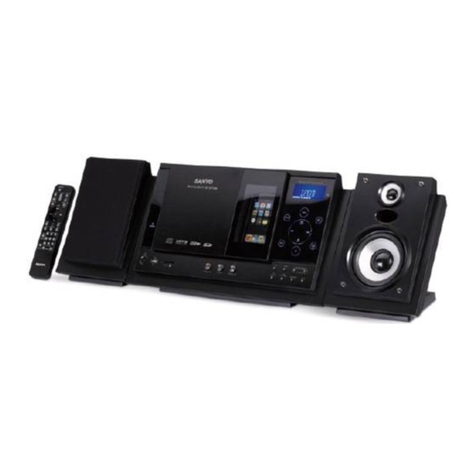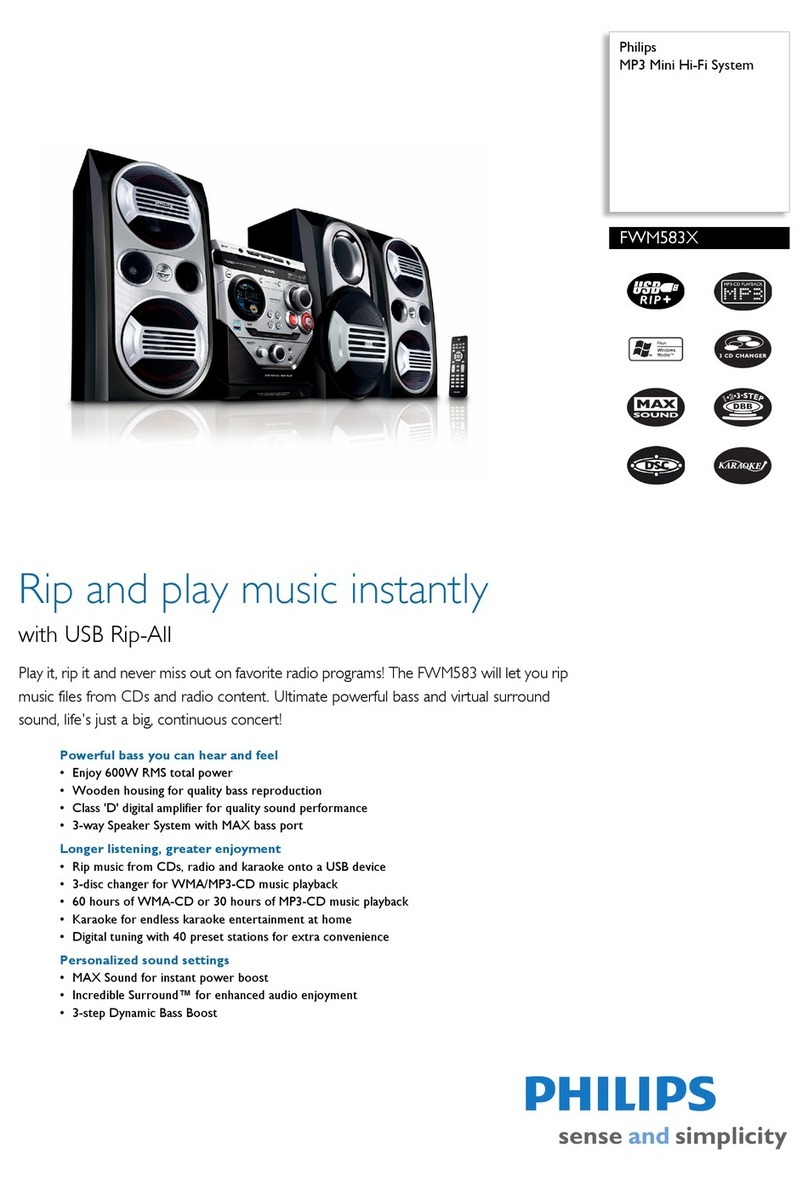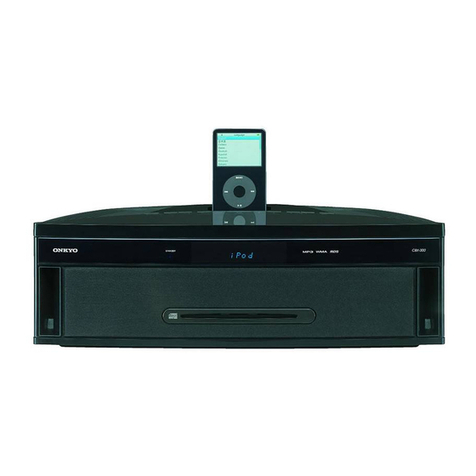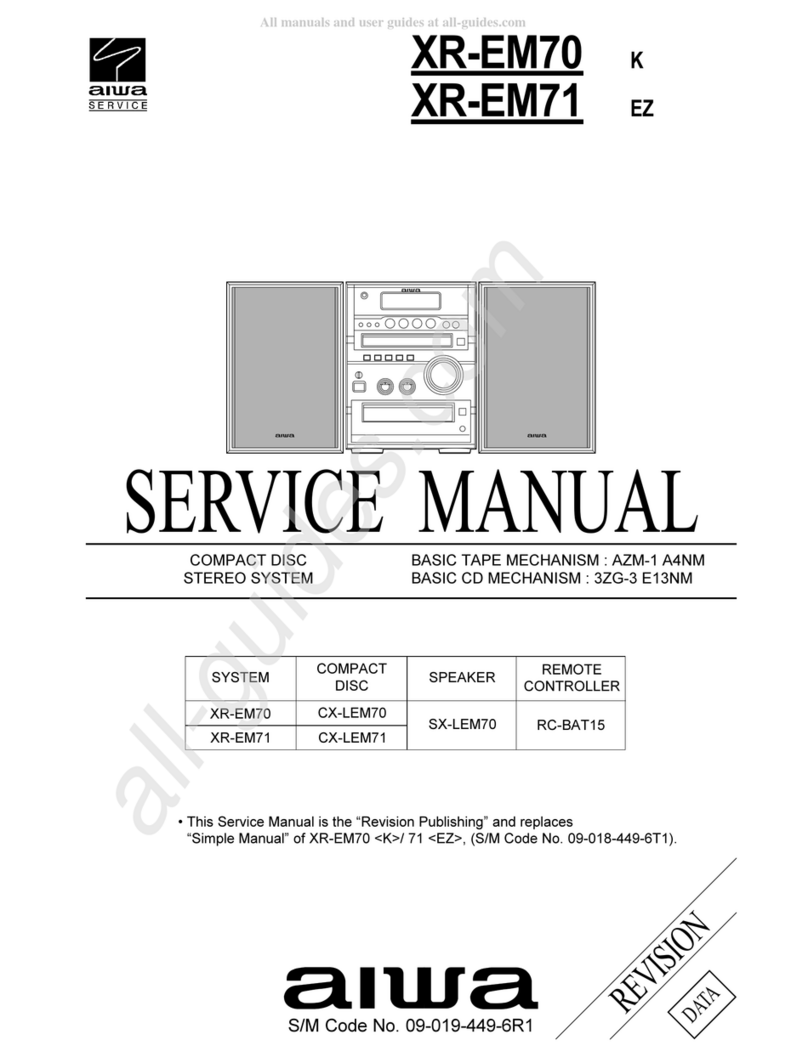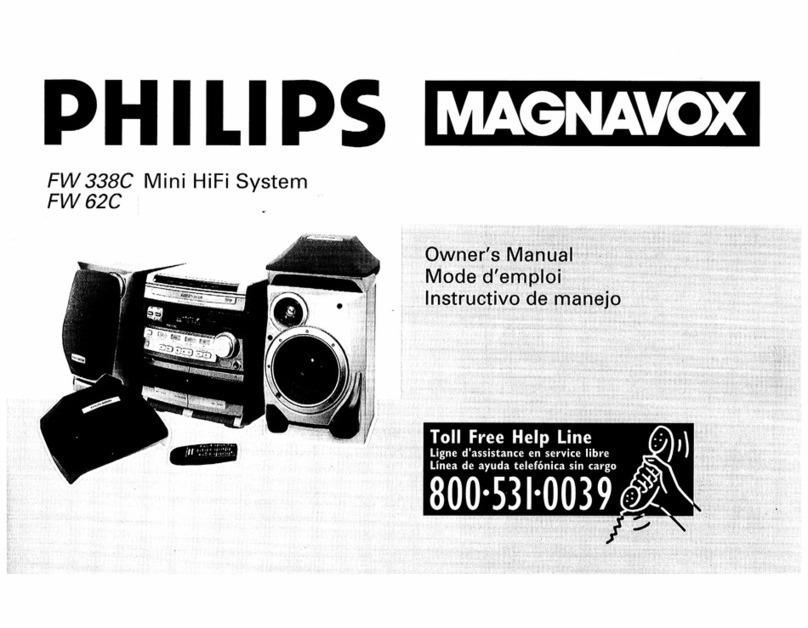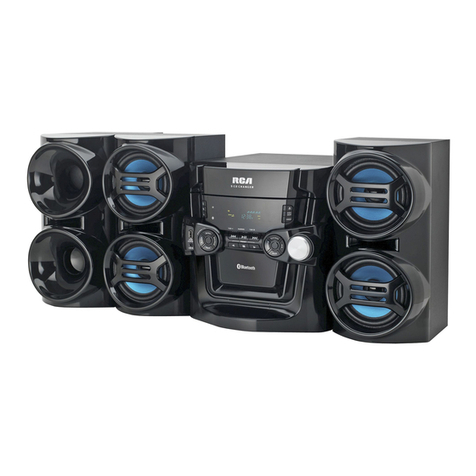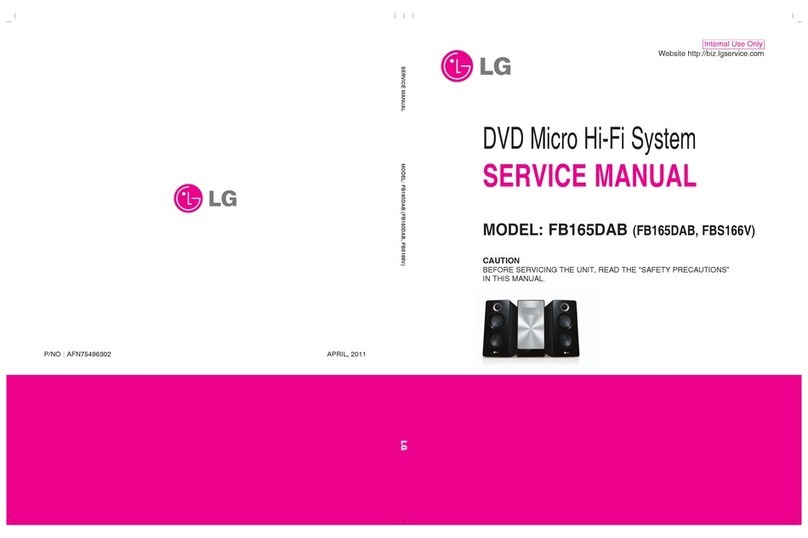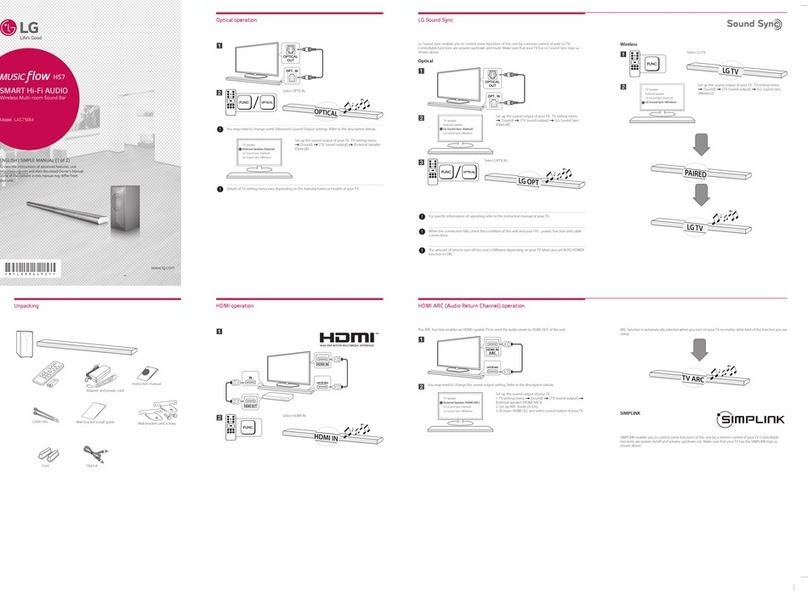
XL-ES5/ES50
2 – 2
[2] TEST MODE
The test mode applied to this microcomputer has three modes, namely
the ordinary test mode for adjustment or measurement, the aging test
mode, and the self-diagnosis test mode for self-judgment in case of
final product inspection.
1. Turning on the test mode
For obtaining each test mode, press the Power ON/STAND BY button,
while keeping pressing the following two buttons in the ordinary stand-
by mode (power off). In this case, the main unit buttons are valid.
When turning the POWER on with remote control buttons, test modes
are not obtained.
[Ordinary test mode]
[Self-diagnosis Test Mode]
Processes are different depending on destinations at initial settings.
2. CD Test Mode (TEST 1)
In the CD test mode the operation of each step is possible even if the
LID-SW is off. If focus cannot be taken in step 3 or any error is pro-
cessed, it is impossible to proceed to the next step. During error pro-
cessing, end the test mode by pressing the Power ON/STAND BY
button or return to the step 1 by pressing the CD STOP button. Any
other operations are inhibited.
1. Step 1 Mode
When the CD test mode is obtained, the following display lights up.
Then CD initialization operation flow proceeds up to CD STB off to
wait for the following buttons to be pressed.
Press the following buttons in this state to obtain the operations
specified below.
2. Step 2 Mode
Press the "MEMORY/SET" button in this mode to transmit the laser
lighting command LDON (8400) and turn on the laser. Any other
operations are not performed in this case.
Press the following buttons in this state to obtain the operations
specified below.
3. Step 3 Mode
While the laser keeps lighting, CD initialization operation flow pro-
ceeds up to 'CLV servo ON' to wait for the following buttons to be
pressed.(Focus servo turned on for focus search)
The focus search is repeated to take focus.
Press the following buttons in this state to obtain the operations
specified below.
*If the focus is not received after it has been taken, the process
returns to step 1.
4. Step 4 Mode
The CLV servo ON command (8600) is transmitted to wait for the
following buttons to be pressed. (The disc is rotated for CLV lock.)
The time display always indicates "0:00".
Press the following buttons in this state to obtain the operations
specified below.
*If the focus is not received, the process returns to step 1.
1. CD Test Mode (TEST 1)...........................................................
CD + DISC1
2. Tuner Test Mode (TEST 2)........................................................
TUNER(BAND) + DISC1
3. Electronic Volume Test Mode (TEST 3).....................................
TUNING DOWN + VOLUME UP
4. Timer Test Mode (TEST 4).......................................................
TUNING UP + DISC5
5. FL Test Mode (TEST 5)...........................................................
PRESET DOWN + VOLUME DOWN
6. CD MECHANISM Aging Test Mode (TEST 8)............................
CD + Equalizer
1. Button input diagnosis test mode (TEST 6)...............................
PRESET UP + DISC5
"POWER ON/STAND BY"... Test mode and power turned off to shift
to the ordinary standby mode.
"FF/FWD".......................... After the pickup returns to the innermost
periphery, it slides toward the outer
periphery while this button is pressed.
"REW/REV"...................... After the pickup returns to the innermost
periphery, it slides toward the inner
periphery while this button is pressed. If
PICKUP IN is on, input is invalid.
One second after display lights up
"MEMORY/SET"................ Shift to step 2
"STOP".............................. Invalid
"VIDEO/AUX".................... CLV
"POWER ON/STAND BY"... Test mode and power turned off to shift
to the ordinary standby mode.
"FF/FWD"......................... The pickup slides toward the outer
periphery while this button is pressed.
"REW/REV"....................... The pickup slides toward the inner
periphery while this button is pressed. If
PICKUP IN is on, input is invalid.
"MEMORY/SET"................ Shift to step 3
"POWER ON/STAND BY"..... Test mode and power turned off to shift
to the ordinary standby mode.
"FF/FWD"........................... The pickup slides toward the outer
periphery while this button is pressed.
"REW/REV"........................ The pickup slides toward the inner
periphery while this button is pressed.
If PICKUP IN is on, input is invalid.
"MEMORY/SET".................. If focus has been taken, shift to step 4 is
executed. If not, acceptance is inhibited.
"POWER ON/STAND BY".... Test mode and power turned off to shift
to the ordinary standby mode.
"FF/FWD".......................... The pickup slides toward the outer
periphery while this button is pressed.
"REW/REV"........................ The pickup slides toward the inner
periphery while this button is pressed.
If PICKUP IN is on, input is invalid.
"MEMORY/SET".................. Return to step 5
